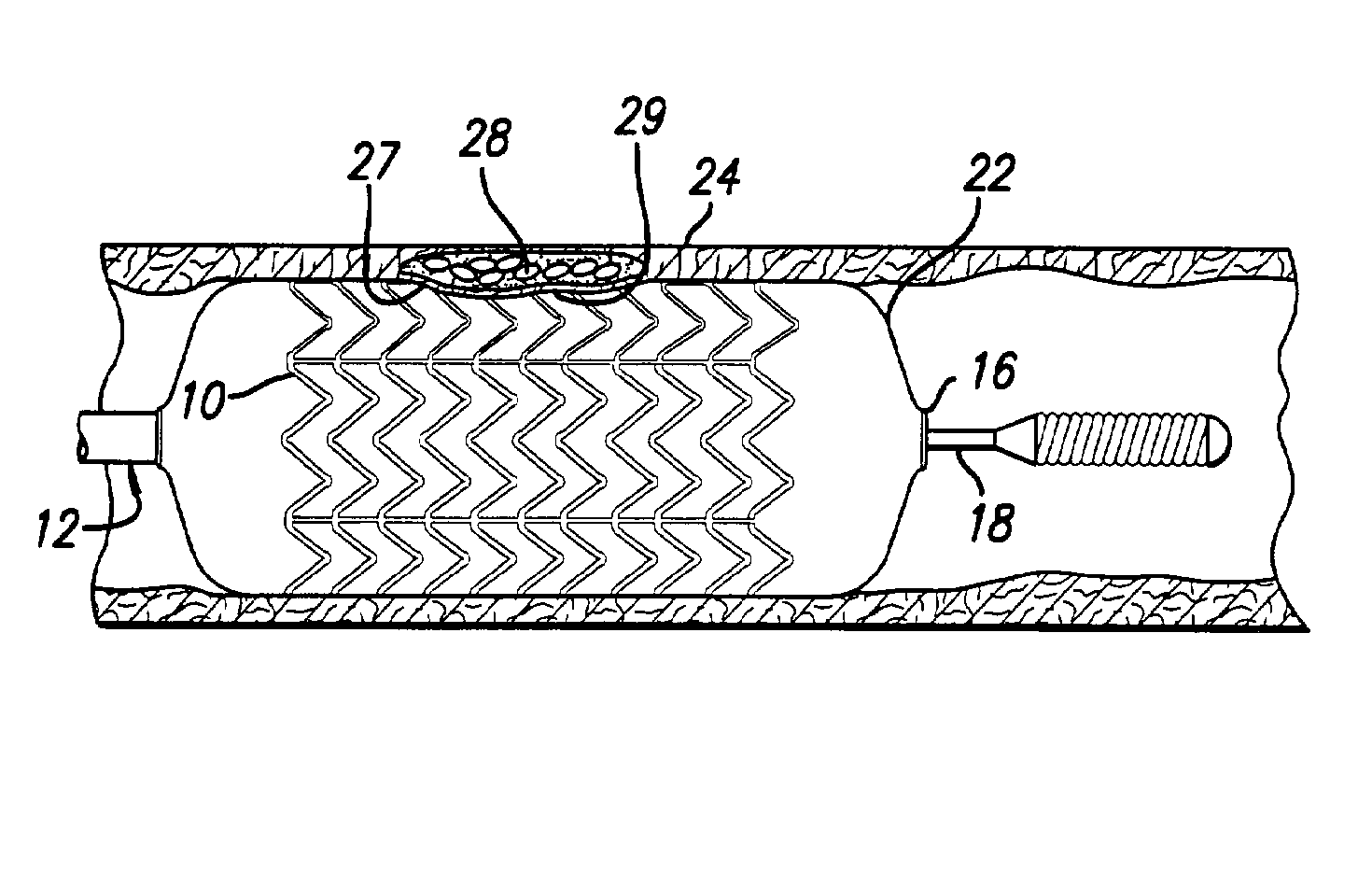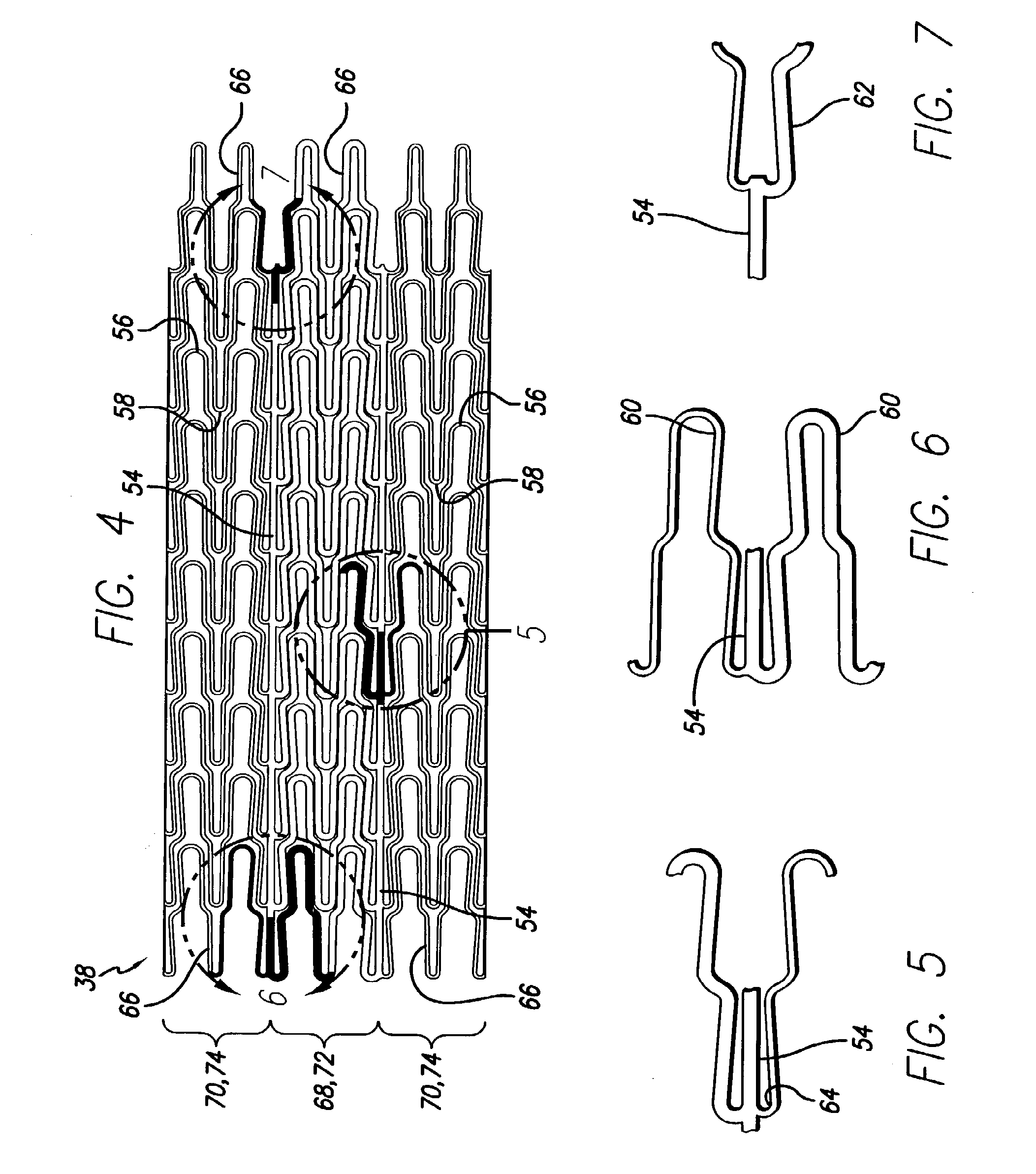Intravascular stent for treating vulnerable plaque and method of use
a stent and plaque technology, applied in the field of intravascular stents, can solve the problems of unsatisfactory non-uniform force distribution and arteries may develop vulnerable plaque, and achieve the effects of good vessel wall coverage, and increased vessel wall coverag
- Summary
- Abstract
- Description
- Claims
- Application Information
AI Technical Summary
Benefits of technology
Problems solved by technology
Method used
Image
Examples
Embodiment Construction
[0036]The present invention stent improves on existing stents by providing concentrated stress points about the circumference of the stent. The design of the stent increases pressure against diseased portions of the artery, such as vulnerable plaque, while inducing less stress against healthier portions of the artery during stent opening. The stent also facilitates rupture of the fibrous cap for controllably releasing the vulnerable plaque contents during stent opening.
[0037]Turning to the drawings, FIG. 1 depicts stent 10 of the present invention mounted on a catheter assembly 12 which is used to deliver the stent and implant it in a body lumen, such as a coronary artery, peripheral artery, or other vessel or lumen within the body. The catheter assembly includes a catheter shaft 13 which has a proximal end 14 and a distal end 16. The catheter assembly is configured to advance through the patient's vascular system by advancing over a guide wire by any of the well known methods of an...
PUM
 Login to View More
Login to View More Abstract
Description
Claims
Application Information
 Login to View More
Login to View More - R&D
- Intellectual Property
- Life Sciences
- Materials
- Tech Scout
- Unparalleled Data Quality
- Higher Quality Content
- 60% Fewer Hallucinations
Browse by: Latest US Patents, China's latest patents, Technical Efficacy Thesaurus, Application Domain, Technology Topic, Popular Technical Reports.
© 2025 PatSnap. All rights reserved.Legal|Privacy policy|Modern Slavery Act Transparency Statement|Sitemap|About US| Contact US: help@patsnap.com



